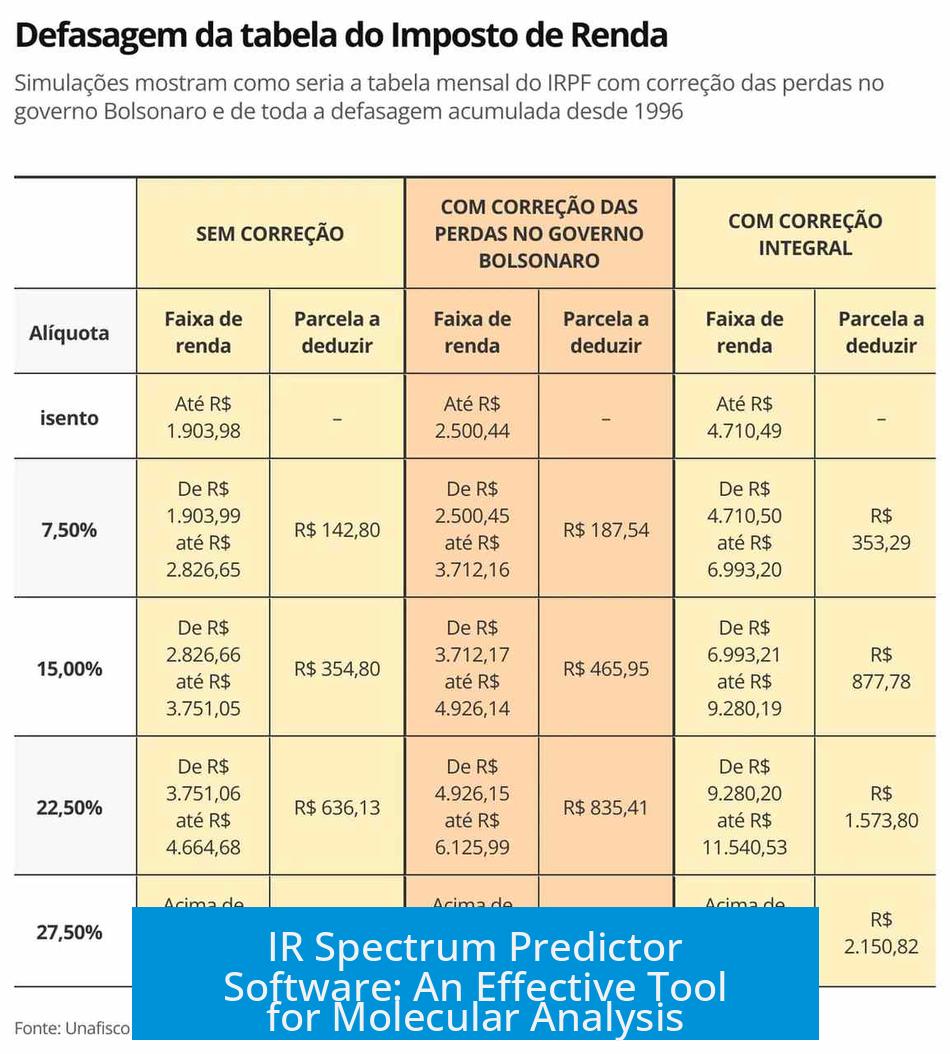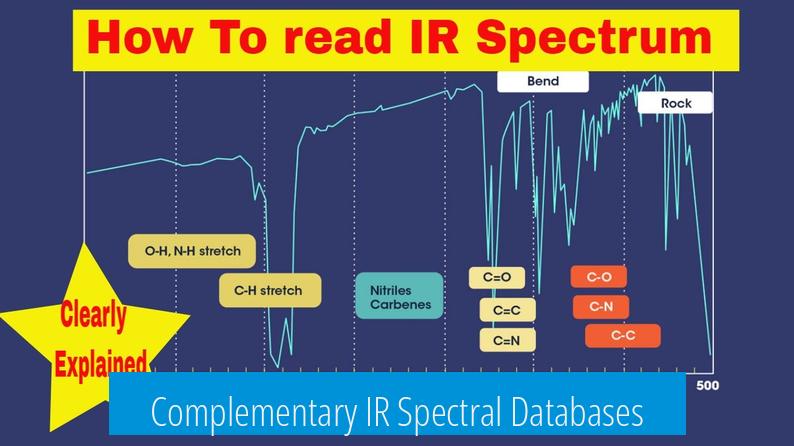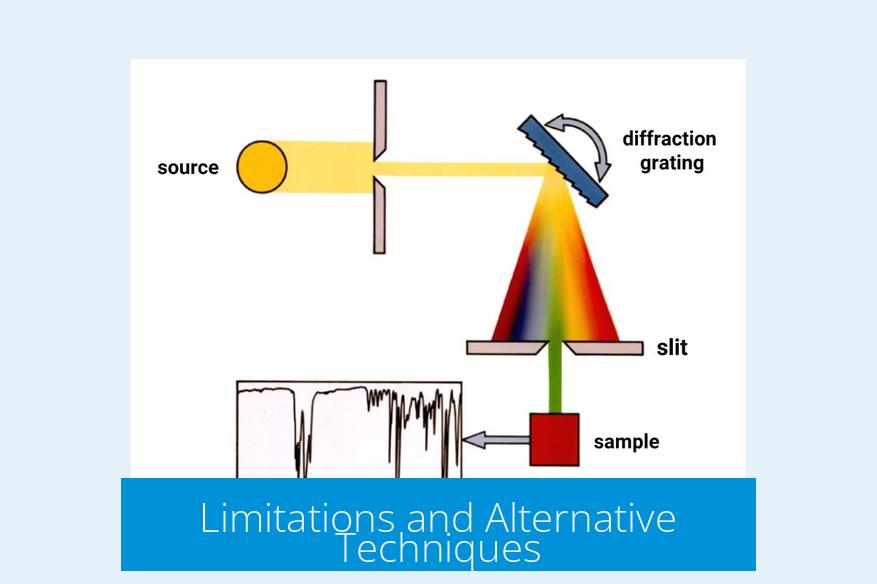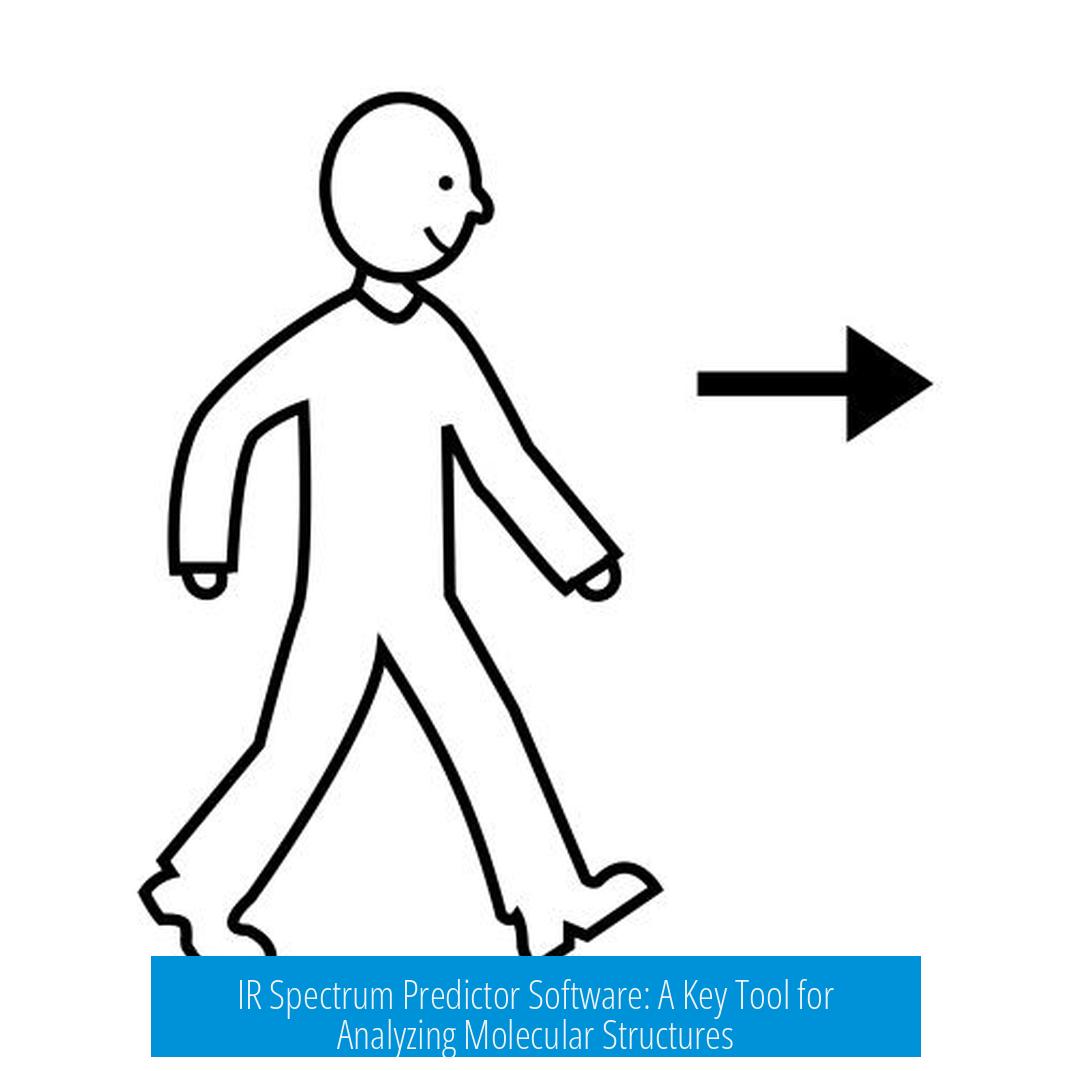IR Spectrum Predictor Software: An Effective Tool for Molecular Analysis

IR spectrum predictor software estimates the infrared absorption spectra of molecules, providing key data for chemical identification and analysis. These computational tools simulate IR spectra, allowing chemists to anticipate vibrational peaks linked to molecular bonds before actual experimental measurement.
Online IR Spectrum Predictor Tools
One readily accessible resource is hosted at cheminfo.org. This interactive software predicts IR spectra by inputting molecular structures. It enables visualization of expected absorption peaks, such as bond stretches and bends, facilitating quick hypothesis testing in research and education.
Complementary IR Spectral Databases

Predicted IR spectra gain reliability when compared against experimental data. SciFinder, an authoritative chemical database, provides access to numerous experimentally recorded IR spectra alongside nuclear magnetic resonance (NMR) spectra. Combining these spectral datasets helps validate predictions and enhances structural assignments.
Interpreting IR Spectra Peaks
- Sharp peaks around 1700 cm-1 typically indicate carbonyl (C=O) groups.
- Broad absorptions near 3000 cm-1 correspond to hydroxyl (O–H) stretches.
- Other functional groups show characteristic frequency ranges, aiding identification.
Understanding these key absorbance regions allows chemists to derive functional groups present in unknown compounds efficiently.
Limitations and Alternative Techniques

While IR spectroscopy is valuable for identifying specific bonds, it may offer limited information on full molecular structures. Peaks can overlap or lack specificity, complicating complex molecule analysis.
In such cases, NMR spectroscopy provides more detailed structural information by probing atomic environments. Therefore, IR spectrum prediction and interpretation are often complemented by NMR data for comprehensive molecular characterization.
Key Takeaways
- IR spectrum predictor software simulates absorption patterns enabling pre-experimental insight.
- Cheminformatics portals and SciFinder provide predictive and experimental IR spectra data.
- Characteristic peaks like carbonyl around 1700 cm-1 and hydroxyl near 3000 cm-1 aid interpretation.
- IR spectra have limitations and are best used alongside NMR for detailed molecular analysis.
Unlocking Molecular Mysteries: The Power of IR Spectrum Predictor Software
Wondering how chemists peek into the invisible world of molecules? IR spectrum predictor software holds the answer. It predicts how molecules absorb infrared light, revealing their structure and functional groups without breaking a sweat. This tech turns complex vibrations into readable patterns, almost like molecular Morse code.
Let’s dive into the fascinating world of IR spectrum prediction and unravel why this software is a must-have tool, how you can access it, and what to watch out for.
What is IR Spectrum Predictor Software?
Imagine having a crystal ball that shows a molecule’s infrared absorption right at your fingertips. That’s IR spectrum predictor software for you. It takes a molecule’s formula—like C6H6 for benzene—and simulates the IR absorption spectrum. The result? A graph where peaks tell a story about bonds and groups inside the molecule.
This means users don’t have to run physical spectroscopy experiments every time they want to guess a molecule’s IR spectrum. The software uses principles of computational chemistry to simulate how the molecule vibrates and absorbs IR radiation. You get a speedy, reliable preview of the spectrum, which is great for chemists, students, and researchers alike.
Where to Find an Excellent IR Spectrum Predictor Tool?
One of the gems in this field is the online IR spectra prediction tool hosted by cheminfo.org. This tool offers an interactive interface where you can input molecular data and generate predicted IR spectra instantly.
What’s cool about this tool is its accessibility. You don’t need fancy software installed or expensive licenses. Just open your browser, input the molecule, and voila! You receive a detailed IR spectrum prediction. It’s ideal for learning, preliminary analysis, or quick validation.
Complementing Predictions with Real Experimental Data
Prediction tools are fantastic, but every good chemist knows: theory meets reality in the lab. If you have access to SciFinder, you get an ace up your sleeve—a treasure trove of experimental IR spectra for countless molecules.
Besides IR spectra, SciFinder also offers pure NMR spectra for hydrogen and carbon. Combining these data types means you can cross-verify your IR spectrum predictions against real, measured data. This pairing strengthens your structural conclusions, making your investigations less guesswork and more confident science.
Decoding IR Spectra: What Peaks Reveal
So you have your IR spectrum, predicted or experimental. Now, what do those peaks actually mean?
For instance, a sharp peak around 1700 cm-1 screams “carbonyl group” (that’s C=O), a hallmark feature of many organic compounds like ketones and aldehydes. A broad peak near 3000 cm-1 usually indicates an OH group, typical for alcohols or acids.
Understanding these specific absorption windows empowers you to quickly identify functional groups in a molecule. It’s like having a chemical detective’s cheat sheet.
When IR Might Fall Short: Limitations and Alternatives
Here’s where a dose of realism kicks in. IR spectroscopy is powerful, but not a Swiss army knife for molecular identification. Outside those strong fingerprint peaks—carbonyls, hydroxyls—it sometimes struggles to paint a full molecular portrait.
In fact, some chemists joke, “Otherwise IR is nearly useless, just get an NMR lol.” While humorous, it’s a sharp reminder that nuclear magnetic resonance (NMR) spectroscopy offers richer detail on molecular skeletons, connectivity, and stereochemistry.
Still, IR spectrum predictor software remains incredibly useful for quick checks and initial structural hints. Just don’t sell it as a lone hero in every analytical battle.
How to Make the Most of IR Spectrum Predictor Software
Ready to be an IR spectrum ninja? Here are some actionable tips:
- Validate Predictions: Use online tools like cheminfo.org to get the predicted spectrum. Then compare it with experimental data from SciFinder or other spectral libraries.
- Focus on Key Functional Groups: Start your analysis by identifying sharp and broad peaks at signature frequencies like 1700 cm-1 for carbonyls or 3000 cm-1 for hydroxyl groups.
- Combine with Other Techniques: Don’t rely solely on IR. Use NMR data to strengthen and confirm your molecular structure hypotheses.
- Learn by Experimentation: Sketch out molecules, predict their IR spectra, then check them against known spectra to train your intuition.
The Unique Angle: IR Spectrum Prediction in Today’s Digital Chemistry
IR spectrum predictor software symbolizes the remarkable fusion of chemistry and computation. Instead of ordering a lab sample, waiting hours, or struggling with bulky instruments, you can get spectral insights in mere seconds online.
This is truly transformative. Students can experiment without chemicals. Researchers narrow targets before synthesis. Industrial chemists troubleshoot compounds faster. The software breaks down barriers created by cost, time, or access to instruments.
Moreover, these tools integrate seamlessly with big databases like SciFinder, creating a synergy where prediction meets validation. This combination propels discovery and learning forward.
Final Thoughts: Should You Use IR Spectrum Predictor Software?
If you deal with chemical structures and need fast, clear insights, absolutely yes. IR spectrum predictor software provides a monthly magic show of molecular vibrations. However, embrace it as part of a broader toolkit. It’s excellent for spotting key bonds and learning IR basics but lean on NMR and experimental spectra when you crave deep structural truth.
So next time you stumble on a mystery molecule, try a prediction online. See the peaks dance on your screen, decode the telltale signals, then dive deeper. IR spectrum prediction is not just software—it’s a gateway into the molecular world, one vibrational waltz at a time.
Ready to give it a whirl? Check out cheminfo.org and start predicting now!




Leave a Comment